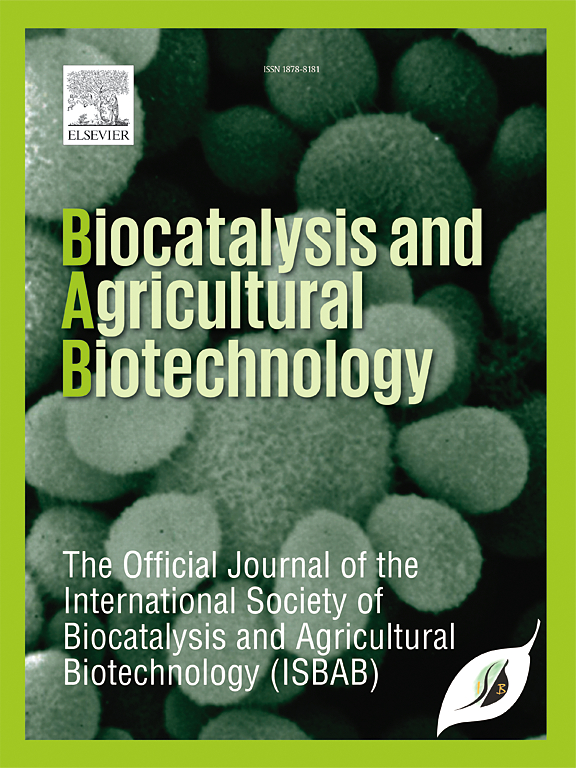Enhancing melatonin photostability and controlled release using pH-responsive mesoporous silica nanoparticles for agricultural applications
IF 3.4
Q2 BIOTECHNOLOGY & APPLIED MICROBIOLOGY
引用次数: 0
Abstract
pH-responsive and thiol-functionalized mesoporous silica nanoparticles (SH-MSNs) encapsulating the phytohormone melatonin were designed to release the hormone in a controlled manner while enhancing its photostability. Melatonin-loaded MSNs were prepared in weight ratios of 1:4, 1:2, 1:1, and 2:1, with the highest loading efficiency of 17.12 μg/mL observed at a 1:1 melatonin/SH-MSNs ratio. Detailed characterization of these MSNs confirmed their functionality: zeta potential and size analyses indicated enhanced stability post-functionalization and loading; FESEM confirmed spherical morphology; EDX and FTIR validated melatonin incorporation and disulfide linkage formation; and DSC and XRD analyses demonstrated the amorphous transformation of melatonin, enhancing dissolution rates. Reduced specific surface area and pore volume, as revealed by N2 adsorption-desorption studies, confirmed melatonin entrapment. A distinct DSC peak at 118.82 °C reflected the crystalline nature of pure melatonin, contrasting with its amorphous state post-encapsulation. In vitro release studies demonstrated significant pH responsiveness, with 81 % melatonin release at pH 5.5 and 55% release at pH of 6.5 after 48 h due to disulfide bond reduction. Additionally, encapsulation improved melatonin photostability by 64.9% compared to free melatonin. This research suggests that MSNs grafted with redox-responsive gatekeepers could be used in crops to deliver melatonin in a controlled manner. Future research may explore the broader agricultural benefits of these MSNs for controlled release of other phytohormones under various environmental conditions.

求助全文
约1分钟内获得全文
求助全文
来源期刊

Biocatalysis and agricultural biotechnology
Agricultural and Biological Sciences-Agronomy and Crop Science
CiteScore
7.70
自引率
2.50%
发文量
308
审稿时长
48 days
期刊介绍:
Biocatalysis and Agricultural Biotechnology is the official journal of the International Society of Biocatalysis and Agricultural Biotechnology (ISBAB). The journal publishes high quality articles especially in the science and technology of biocatalysis, bioprocesses, agricultural biotechnology, biomedical biotechnology, and, if appropriate, from other related areas of biotechnology. The journal will publish peer-reviewed basic and applied research papers, authoritative reviews, and feature articles. The scope of the journal encompasses the research, industrial, and commercial aspects of biotechnology, including the areas of: biocatalysis; bioprocesses; food and agriculture; genetic engineering; molecular biology; healthcare and pharmaceuticals; biofuels; genomics; nanotechnology; environment and biodiversity; and bioremediation.
 求助内容:
求助内容: 应助结果提醒方式:
应助结果提醒方式:


